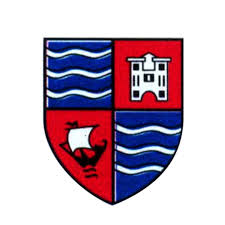Government Keypoints: Public Opinion; Public opinion refers to the collective views, beliefs, attitudes, and sentiments held by a significant portion of the population on various issues, policies, events, or individuals.
Study more government keypoints here
Understanding public opinion is crucial in democratic societies as it influences decision-making processes in governance, politics, business, and social policies.
Section A: Meaning, Formation, and Measurement of Public Opinion
Meaning:
Public opinion represents the prevailing viewpoints or attitudes of a group or society on specific matters. It’s shaped by individual experiences, social interactions, media exposure, cultural influences, and personal values.
Formation:
- Socialization: Attitudes and opinions are formed through family, education, peer groups, and societal norms.
- Media Influence: News, social media, and other forms of media shape and inform public opinion.
- Personal Experience: Individual encounters and experiences contribute to shaping opinions.
- Leadership and Advocacy: Influential figures and leaders can sway public opinion through their actions and speeches.
Measurement:
- Surveys and Polls: Conducting polls through various methods such as phone surveys, online polls, or face-to-face interviews to gauge public sentiment.
- Focus Groups: Small group discussions used to delve deeper into opinions on specific issues.
- Social Media Monitoring: Analyzing trends, sentiments, and discussions on social media platforms.
- Election Results: Voting patterns and election outcomes often reflect public opinion on political matters.
Example: Gallup Polls regularly conduct surveys on various topics, from political preferences to consumer behavior, providing insights into public opinion.
Section B: Functions and Limitations of Public Opinion
Functions of Public Opinion:
- Legitimacy: It provides legitimacy to policies and decisions when they align with the majority’s views.
- Accountability: Public opinion holds leaders accountable as they are responsive to constituents’ sentiments.
- Policy Influence: Public opinion shapes policy agendas and decisions made by policymakers.
- Social Change: Strong public opinion can drive social change by influencing norms and values.
Limitations of Public Opinion:
- Volatility: Opinions can change rapidly due to new information, events, or shifts in narratives.
- Manipulation: Public opinion can be influenced or manipulated by media, propaganda, or biased information.
- Minority Disregard: Majority opinions might overshadow minority voices, leading to marginalization.
- Informed vs. Uninformed Opinions: Not all opinions are equally informed or well-researched, impacting their validity.
Section i: Comparison of Methods of Assessing Public Opinion
Methods of Assessing Public Opinion:
- Surveys and Polls: Quantitative methods gathering data from a sample of the population.
- Qualitative Approaches: Focus groups or interviews for in-depth understanding.
- Social Media Analytics: Monitoring and analyzing discussions and sentiments online.
- Election Results: Reflecting public opinion through voting patterns.
Section ii: Assessment of the Functions of Public Opinion
Evaluation of Functions:
- Legitimacy and Accountability: Public opinion ensures policies have popular support and holds leaders accountable.
- Policy Influence: It shapes government agendas and decisions based on popular demand.
- Social Change: Public opinion can drive societal shifts and reforms.
Section iii: Analysis of the Limitations of Public Opinion
Critical Analysis:
- Volatility and Manipulation: Rapid changes and external influences can distort public sentiment.
- Minority Voices: The dominance of majority opinions might overshadow or neglect minority perspectives.
- Quality of Opinions: Not all opinions are well-informed, impacting their validity and influence.
Example: The Brexit referendum in the UK reflected a public opinion divided on leaving the European Union, showcasing the power and limitations of public sentiment in shaping significant policy decisions.
Conclusion:
Public opinion is a dynamic force that shapes policies, governance, and societal norms. While it holds significant influence, understanding its formation, measurement methods, functions, and limitations is crucial in grasping its impact and ensuring a balanced consideration of diverse perspectives in decision-making processes.












